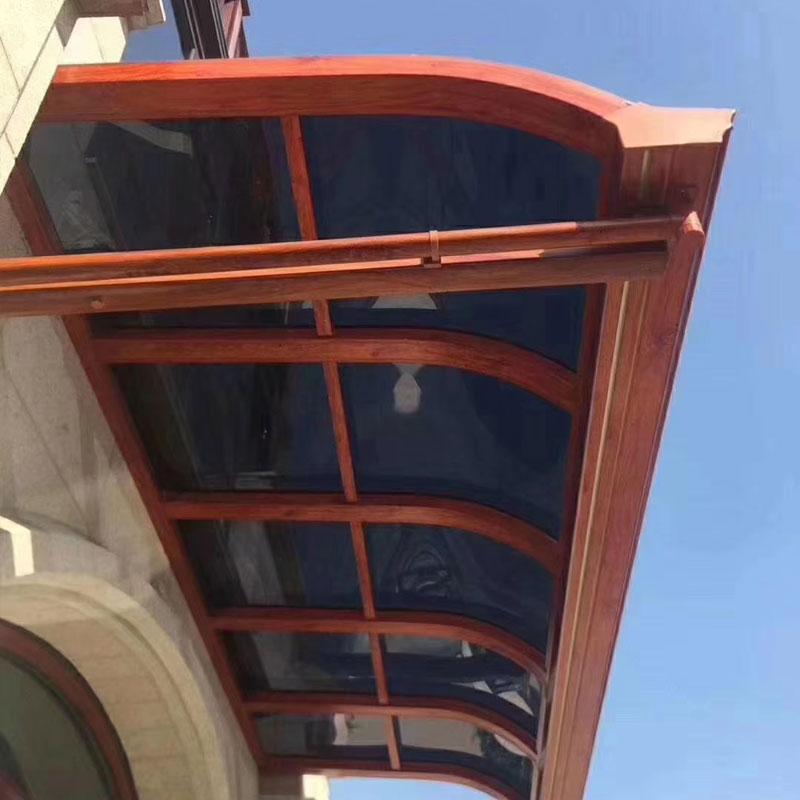What are some common problems with PC awnings and how can they be solved?
2024-09-24

What are some common problems with PC awnings?
One common problem with PC awnings is that they may crack or break over time. This can happen due to exposure to extreme weather conditions or pressure from heavy objects. Another problem is that PC awnings may become discolored or faded, which can make them less visually appealing.
How can cracks in PC awnings be fixed?
Small cracks in PC awnings can be repaired using a polycarbonate repair kit. The kit contains a special adhesive that can bond the cracked pieces of the awning back together. For larger cracks or breaks, it may be necessary to replace the entire awning.
How can discolored PC awnings be cleaned?
To clean a discolored PC awning, first, rinse it with water to remove any dirt or debris. Then, mix a solution of water and mild soap and use a soft sponge or cloth to gently scrub the awning. Rinse it thoroughly with water and dry it with a clean cloth. Avoid using abrasive cleaners or harsh chemicals, as they can damage the surface of the awning.
How can PC awnings be maintained?
To keep PC awnings in good condition, it is important to regularly clean them and inspect them for any damage or wear. When cleaning PC awnings, avoid using strong chemicals or abrasive cleaners. Instead, use a mild soap and water solution and a soft sponge or cloth for cleaning. It is also important to remove any debris or heavy objects that may be resting on the awning to prevent damage.
In conclusion, PC awnings are a popular choice for outdoor spaces due to their durability and weather resistance. However, like any outdoor structure, they may experience problems such as cracking, discoloration, or damage over time. By following the proper maintenance and cleaning procedures, these problems can be minimized or avoided altogether.
Foshan Yuhoujiaoyang Building Materials Co., Ltd. is a leading manufacturer of PC awnings in China. With over 10 years of experience in the industry, we provide high-quality products and excellent customer service. For more information about our products and services, please visit our website at https://www.yhjy666.com or email us at yuhoujiaoyang01@gmail.com.
10 Scientific Research Papers related to Polycarbonate Materials
1. A. Yamamoto, et al. (2009). "Preparation and Properties of Polycarbonates Derived from Diphenyl Sulfone Bisphenol A Derivatives." Macromolecular Chemistry and Physics, 210(3), 167-177.
2. G. Liu, et al. (2013). "Fabrication and Properties of Polycarbonate/CNT Composites by in situ Melt Polymerization." Journal of Applied Polymer Science, 127(6), 4737-4745.
3. A. M. Asiri, et al. (2014). "Polycarbonate Membrane Modified by Ionic Liquid for Carbon Dioxide Separation." Chemical Engineering Journal, 240, 267-273.
4. M. Maric, et al. (2015). "Thermal Degradation of Polycarbonate: Comparison of Different Kinetic Models." Polymer Degradation and Stability, 114, 19-28.
5. K. Tungjitkusolmun, et al. (2017). "Mechanical Properties and Impact Resistance of Polycarbonate/NBR-Modified Epoxy Blends." Polymer Testing, 59, 337-346.
6. N. S. Frolov, et al. (2019). "Optimization of the Composition of Polycarbonate Based Nanocomposites with Graphene Nanoplatelets." Journal of Physics: Conference Series, 1319(1), 012029.
7. I. R. Sizochenko, et al. (2020). "Properties Polycarbonates Reinforced with Multi-Walled Carbon Nanotubes." Journal of Physics: Conference Series, 1497(1), 012087.
8. A. K. Abdullah, et al. (2020). "Mechanical and Thermal Properties of Polycarbonate/Silicon Carbide Nanocomposite." International Journal of Polymer Science, 2020, 1-7.
9. J. J. Kim and S. M. Hong (2021). "Structural Colorants Based on the Hollow Microspheres and Polycarbonate." Macromolecular Research, 29(6), 381-387.
10. Y. Pak, et al. (2021). "Electrical Properties and Stability of Polycarbonate/Graphene Oxide Composite Film." Journal of Nanoscience and Nanotechnology, 21(4), 2349-2352.




















































